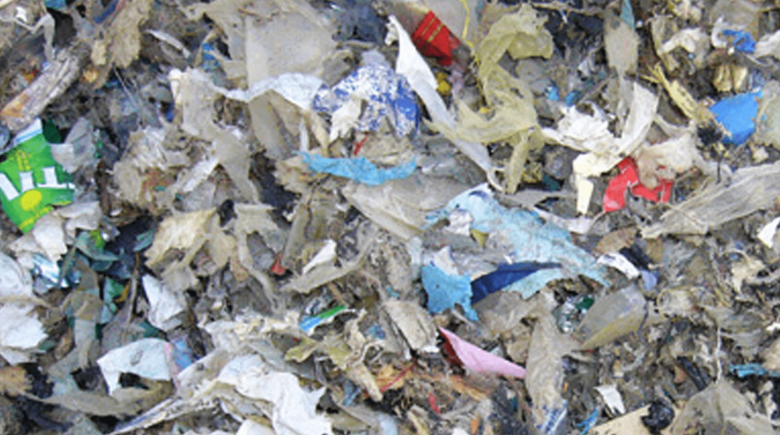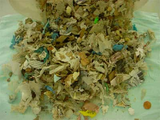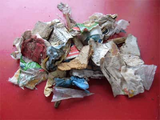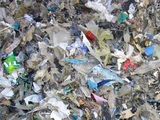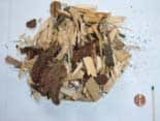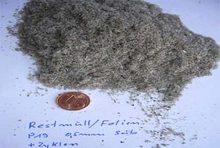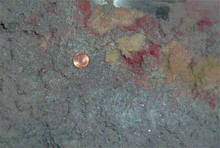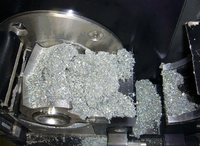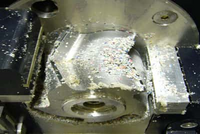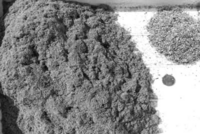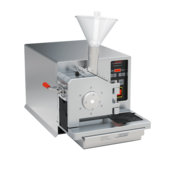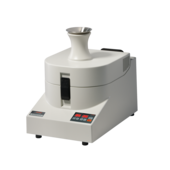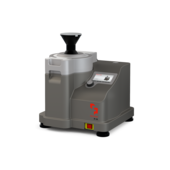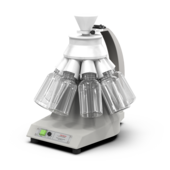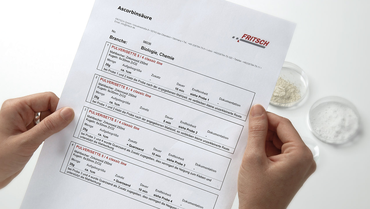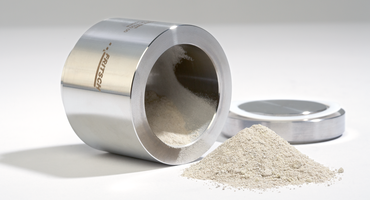Back to overview
Sample preparation for refuse derived fuels
Refuse derived fuels: Plastic, wood and shredded waste: Here are some examples of more or less well sorted fractions. Here the spectrum spans blends like can be seen here: pure plastic waste or even wood.
Common for all of them: they are energetic interesting additions during thermal processes. The most important parameter is therefore the heating value for example determined according to DIN 51900 “testing of solid and liquid fuels” and “determination of the heating values”.
Very disturbing for the incineration plant is the chlorine content, for example determined according to DIN 51727 „testing of solid fuels” and “determination of the chlorine content”
Depending on the source and composition of the secondary fuels, additional parameters are to be analyzed, like for example ignition loss according to DIN 38414-S3, BTEX according DIN 38407-F9, PAK according DIN 13877, PCB according DIN 38414-S20 or also even heavy metals.
Prerequisite for the analysis is the supply of a representative sample. The sample must be processed so fine, that for the analysis to be weighed in amount corresponds with that of the entire material to be screened. But these samples are - depending on their source - mostly very heterogeneous. Therefore must mostly larger amounts between 1 and 10 litres be comminuted. As a sufficient fineness for the analysis is a sieving of 0.5 to 1 mm required.
The Universal Cutting Mill PULVERISETTE 19 is recommended
Based on the amount of the material and its properties, only a cutting mill can be considered for this task. Furthermore, when considering that in order to avoid cross contamination, the cleaning of the instrument often lasts longer than the actual comminution, consequently only the Universal Cutting Mill PULVERISETTE 19 can be recommended. The mill distinguishes itself through:
- Quick lock
- Cutting rotor removable without tools
- Sieve cassette removable without tools
- No dead spaces which evade the cleaning
The Cyclone Separator is a must
If a sieving of 0.5 mm is desired, then most materials can only be prepared with a combination of the cutting mill with the cyclone separator. The cyclone separator generates an air current. It downright draws the materials from the funnel, and acts as a coolant during the comminution and fosters the movement of the material and therefore the passing through the sieve. The finished prepared sample is removed through the cyclone separator into a sample glass.
Tests showed that a pre-comminution for example with a 4 mm sieve and an ensuing fine comminution with a 5 mm sieve, can in no case replace the cyclone separator. Rather the opposite is to be noticed. Are the above pictured foils additionally pre-comminuted, the final fineness of 0.5 mm is no longer obtainable. On the sieve accumulates a film which stops the material throughput. Coarse material whirls in the grinding chamber and therefore keeps the sieve clear.
The same is to be observed with material blends: the more heterogeneous the materials within a sample are, the better they can be prepared. Therefore should material blends not be sorted prior to the comminution. Separated though should be iron parts. Are samples with a non-ferrous heavy metal share prepared, or is the focus on heavy-metal-free preparation, cutting knives of other materials are available.
Here a few examples: industrial waste, residual waste, and wood were prepared with the Universal Cutting Mill PULVERISETTE 19:
During this attempt material was processed without a cyclone separator through a 0.5 mm sieve. Of course not all material was put through. The user can mostly observe this (photo on the left) after opening the grinding chamber. The remaining residue can be disregarded, if the amount of throughput is large enough.
Are the percentages of the in the grinding chamber remaining amounts too large in comparison to the entire sample, or is it assumed, that remainders have a different composition than the comminuted sample, then the following recommendations apply:
- pre-comminute with the Universal-Cutting Mill PULVERISETTE 19 + sieve cassette 2 mm
- divide the sample with the Rotary-Cone Sample Divider LABORETTE 27
- finely comminute the representative sample amount from the first step with the Variable Speed Rotor Mill PULVERISETTE 14 and a 0.5 mm sieve or
- mix the sample with dry ice and put it through the Universal Cutting Mill PULVERISETTE 19 with a sieve cassette 0.5 mm and Cyclone separator in one step
- re-comminute with dry ice without an additional sample
-
Download the FRITSCH-report as PDF file
-
Detailed grinding reports
Back to overview

